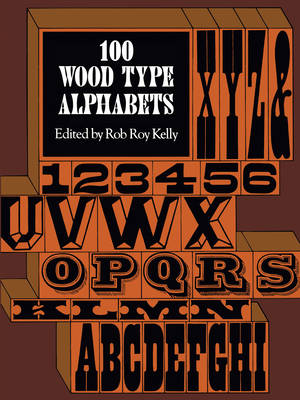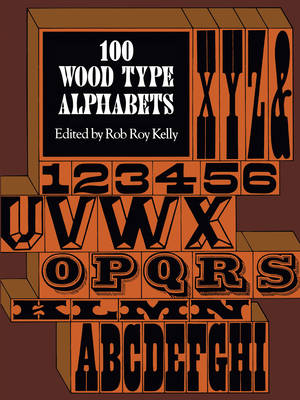
- Afhalen na 1 uur in een winkel met voorraad
- Gratis thuislevering in België vanaf € 30
- Ruim aanbod met 7 miljoen producten
- Afhalen na 1 uur in een winkel met voorraad
- Gratis thuislevering in België vanaf € 30
- Ruim aanbod met 7 miljoen producten
Zoeken
€ 27,95
+ 55 punten
Omschrijving
The rich designs and figure-ground qualities of 19th-century American wood types are beautifully displayed in this collection of 100 fonts, many reproduced at actual size. Each font is represented by a complete alphabet of capitals, while many include lowercase letters, as well as numerals and punctuation marks, along with useful and decorative motifs from wood blocks. The fonts have been selected from Rob Roy Kelly's extensive personal collection of wood type alphabets.
The alphabets are arranged according to type style. Plates 1-11 are Roman and include variations of Roman style. These are bold, straightforward alphabets, with serifs and graduated thick and thin strokes. Plates 12-65 are Antique, the most popular 19th-century letter form. These alphabets have highly decorative serifs with cut-outs, circles, angles, rectangles, and design variations. Plates 66-100 are Gothic―the most modern specimens, being sans serif. These fonts were mainly used on posters and were the springboard for 20th-century typographic designs. The more than 100 alphabets in this book are a storehouse for graphic designers, typographers, printers, bibliophiles, and collectors of wood type. They can be used for posters, signs, handbills, stationery, book designs, magazine covers, packaging, craftwork, logos, and any other art or advertising project.
The alphabets are arranged according to type style. Plates 1-11 are Roman and include variations of Roman style. These are bold, straightforward alphabets, with serifs and graduated thick and thin strokes. Plates 12-65 are Antique, the most popular 19th-century letter form. These alphabets have highly decorative serifs with cut-outs, circles, angles, rectangles, and design variations. Plates 66-100 are Gothic―the most modern specimens, being sans serif. These fonts were mainly used on posters and were the springboard for 20th-century typographic designs. The more than 100 alphabets in this book are a storehouse for graphic designers, typographers, printers, bibliophiles, and collectors of wood type. They can be used for posters, signs, handbills, stationery, book designs, magazine covers, packaging, craftwork, logos, and any other art or advertising project.
Specificaties
Betrokkenen
- Auteur(s):
- Uitgeverij:
Inhoud
- Aantal bladzijden:
- 108
- Taal:
- Engels
- Reeks:
Eigenschappen
- Productcode (EAN):
- 9780486235332
- Verschijningsdatum:
- 30/11/2011
- Uitvoering:
- Paperback
- Formaat:
- Trade paperback (VS)
- Afmetingen:
- 207 mm x 278 mm
- Gewicht:
- 272 g

Alleen bij Standaard Boekhandel
+ 55 punten op je klantenkaart van Standaard Boekhandel
Beoordelingen
We publiceren alleen reviews die voldoen aan de voorwaarden voor reviews. Bekijk onze voorwaarden voor reviews.











